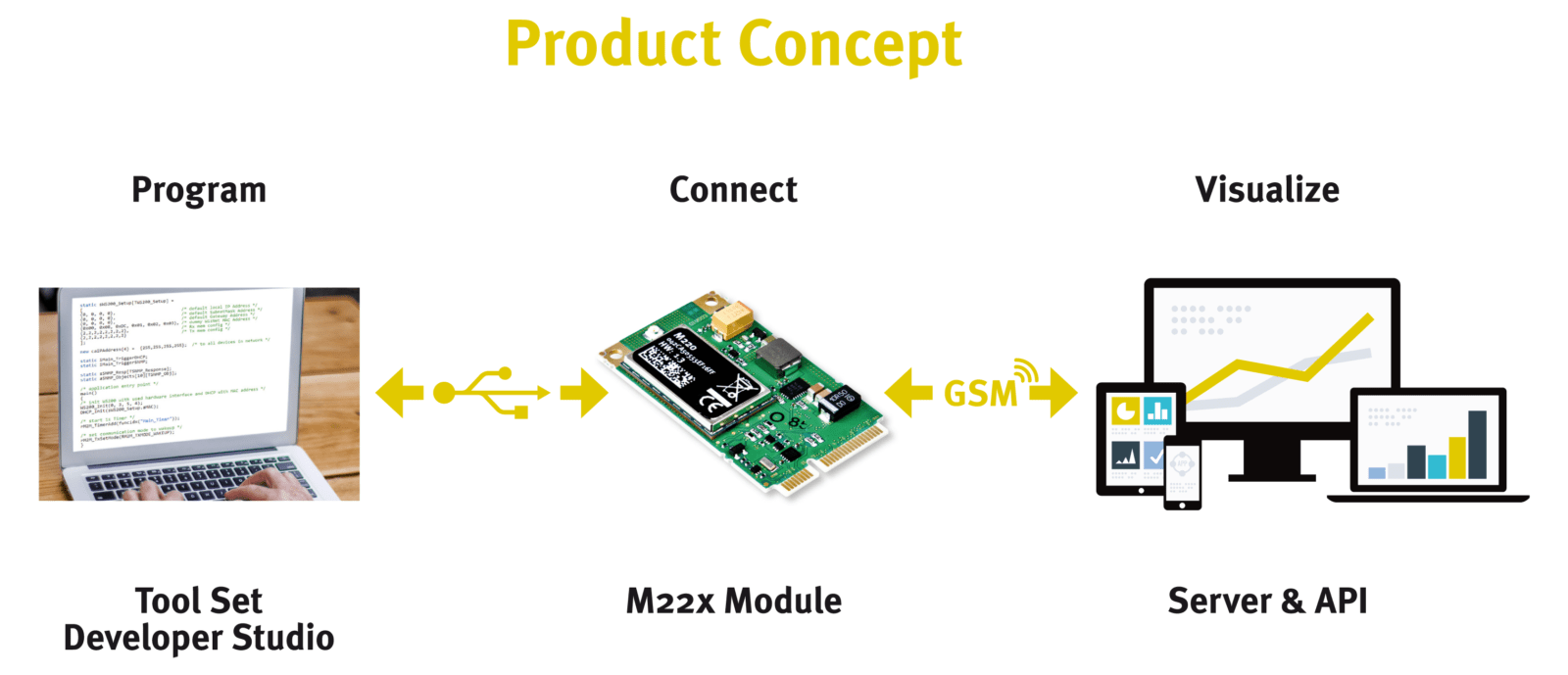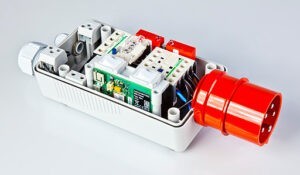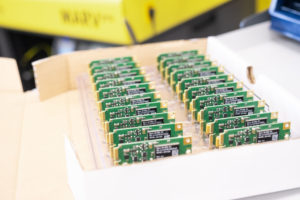First publication on 21st January 2016, updated on February 22, 2023
The M-Module family is constantly being further developed and thus adapted to current and future requirements. Especially in the case of technical products, this is the only way to remain competitive and meet the demands of customers. You benefit from the M-Modul family concept. But what does that mean for you? Do you also need to adapt your products and services to use Microtronics’ technology?
Family concept with long-term compatibility
The family concept of the M modules enables long-term compatibility. This compatibility is reflected in the form factor and the script. The form factor of the M modules corresponds to the standardised 52pin MiniPCI Express connector strip. This is characterised by the compact dimensions of 30 x 5.2 x 51mm (WHT). This means that the M-module can even be easily integrated into small appliances and machines with limited space. The programming remains unchanged. This allows you to import your already developed scripts into newer M-modules as usual. No change to the programme code is necessary for this.
But what’s the point if nothing changes for me?
The further developments take into account frequent requirements and wishes as well as general technical developments. For example, the M220 module is available as a 2G, 3G and 4G variant. In contrast, the predecessor module M120 was only available in a 2G version.
Ultra Low Power is an increasingly common requirement. Devices and products often do not have a fixed power supply and should achieve the longest possible runtime with a battery or rechargeable battery. Just think of various wearables, tracking collars for dogs and cats or smoke detectors in the smart home sector. The architecture of the M220 module has therefore been optimised with a view to low-energy behaviour. Originally, the script was executed directly on the modem. The modem must therefore be switched on for the script to be executed. The modem is known to be one of the biggest power guzzlers. It would therefore be desirable to be able to switch off the modem and really only switch it on when data is being transmitted. For this reason, the script for the M220 module is executed in a processor that is independent of the modem. The modem is only switched on when it is really needed. This results in enormous electricity savings. You benefit from Ultra Low Power technology as soon as you use an M220 module. Your scripts do not need any modification for this.
 The uplink module does not necessarily have to be a GSM modem thanks to the separate architecture. It can be adapted to the customer’s exact requirements and data transfer takes place via WiFi, LAN or Bluetooth, for example. The architecture allows you to choose your modem freely.
The uplink module does not necessarily have to be a GSM modem thanks to the separate architecture. It can be adapted to the customer’s exact requirements and data transfer takes place via WiFi, LAN or Bluetooth, for example. The architecture allows you to choose your modem freely.
The script is executed on a 32Bit M3 or M4. Due to the ARM architecture, the script is easily portable to other MCUs. ARM Cortex MCU has an integrated flash memory. If this memory is not sufficient, an additional flash memory can be attached.
Simple data handling
Data handling with the M220 is convenient and simple. In the toolset or its successor, the Developer Studio, you create your script in which you enter and process data. The measured values are then stored on the server platform. With the API, a familiar interface is made available to you. This allows you to query and manipulate data via http commands. This enables the data to be integrated into your web interface or business logic without media discontinuity. Due to the abstraction of the software layer, you can also use your script in new M modules and thus reduce your development and maintenance costs.
Development does not stand still
At Microtronics, development never stands still – a necessity in order to keep technical products up-to-date and to make processes and functions even simpler and more user-friendly. The M220 module is now available in a 2G version as well as a 3G EU, US or World version. But the possibilities of the mobile radio standards are not yet exhausted. Microtronics is currently working on a 4G version so that you can also take advantage of this standard.
The studio – your central point of contact
With the M-modules, you have many options for precisely mapping your applications. The module is programmable with a C-like scripting language built on PAWN in the Studio. With the Connector, you define your semantic data model. With the REST API, you can use http commands (GET, PUT, POST, DELETE) to query and manipulate the data. You can easily compile and test these commands in the Playground. This excerpt of the tools that are made available to you when using an M-module shows the many possibilities. The Studio gives you a one-stop shop that houses all these apps and functionalities.
Feels the same – is better
The handling of the M-modules does not change for you despite the new and improved features and functions. The M-modules retain the familiar MiniPCI Express form factor and the scripts can continue to be used unchanged. Nevertheless, you benefit from further developments and ensure your current and future competitiveness with the M-Modul family concept.


